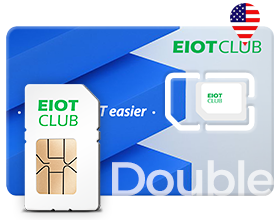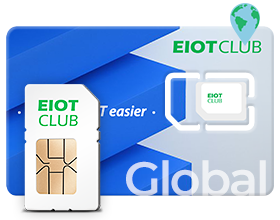Unleashing the Power of 4G LTE: The Ultimate Guide to Lightning-Fast Wireless Connectivity

4G LTE (Long Term Evolution) represents the cutting-edge standard in mobile broadband connectivity, offering speeds and capabilities far exceeding previous cellular network generations. LTE enables new realms of performance for smartphones, mobile devices, and cellular-connected products through network infrastructure and technology advances.
This comprehensive guide will unpack everything important to know about 4G LTE. We'll explore what LTE is, how it works on a technical level, its speed capabilities, advantages over 3G, and current limitations. We'll also clear up the distinctions between LTE as a network standard and LTE SIM cards, which connect devices to the network. Let's get started demystifying 4G LTE!
What Is a 4G LTE SIM Card?
A 4G LTE SIM card is a chip that allows a device to connect to the 4G LTE mobile network and access its high-speed data services. The SIM contains unique credentials that authenticate and identify a device to the 4G network for data transmission.
LTE SIM cards differ from regular SIMs, engineered specifically to connect to 4G frequencies rather than older 2G or 3G networks. Modern smartphones and cellular-enabled devices use nano-size LTE SIM cards to harness 4G speeds.
Cellular providers control LTE SIMs, and you must install one associated with your provider to successfully link to their LTE network. The SIM card slots into your phone or device internally, and once activated, you can enjoy seamless 4G connectivity.
How Does 4G LTE Work?
4G LTE represents an evolutionary leap in cellular technology, re-architecting networks for vastly improved speed and efficiency. Here is a quick overview of how it works:
- LTE utilizes all-digital packet-switched networking rather than older circuit-switched technology. This means data is broken into small packets better optimized for internet traffic.
- It shifts from 3G's CDMA air interface to the superior OFDMA and SC-FDMA access methods, enabling faster and concurrent data transmission.
- It uses increased bandwidth on various frequency bands, allowing more data to flow through the network simultaneously.
- Advanced antenna and modulation techniques are leveraged to deliver higher bits per second while minimizing interference.
- Low network latency is engineered into the underlying architecture, reducing lags and delays.
This combination of technical improvements gives 4G LTE its high-performance edge. For users, that means being able to seamlessly stream HD video, load huge files, download apps, and surf the web at fiber-like speeds wirelessly.
What Are the Advantages of 4G LTE?
4G LTE brings some major advantages over older 3G networks:
- Faster speeds - LTE offers fast peak download speeds of up to 300Mbps, with average speeds of 5-12Mbps - much quicker than 3G's max of 42Mbps.
- Lower latency - LTE optimizations minimize lag and delay to around 60ms versus 100ms on 3G networks.
- Greater bandwidth - LTE uses wider spectrum space in higher frequencies for immense data capacity and simultaneous users.
- Improved connectivity - More robust signal strength and building penetration from advanced LTE antenna technologies.
- Enhanced multimedia - Streaming HD video and audio is smoother with minimized buffering from higher speeds.
- New capabilities - LTE enables innovations like video calling, high-res photo sharing, mobile gaming, IoT ecosystems, and more that need performance.
Overall, 4G LTE represents a revolutionary leap forward for cellular networks, bringing an elite wired-grade experience to wireless mobile devices and platforms.
How Fast Is a 4G LTE SIM Card?
The maximum theoretical LTE download speed is 300Mbps. However, actual speeds will depend on the coverage in your area. With good 4G availability, typical LTE SIM card speeds include:
- Downstream speeds of 5-12 Mbps, with peaks close to 30 Mbps in strong coverage zones.
- Upstream speeds of 2-5 Mbps are still faster than many home broadband uploads.
- Low latency of around 60ms for near real-time voice, video, and gaming interactivity.
Speeds are also affected by network congestion, distance to the nearest tower, obstructions, and hardware capabilities. While not as fast as 5G, a good 4G LTE connection enables heavy usage like HD Netflix streaming, large app downloads, and high-res video calls.
What Is the Difference Between LTE and SIM?
LTE refers to the 4G network technology and standards that define the advanced cellular network. It is engineered into the network infrastructure provided by wireless carriers.
The SIM is a chip containing unique credentials for a cellular subscription. It allows a specific device to connect to and authenticate on the LTE network and access data services through the subscription.
So LTE represents the fast wireless network technology, while the SIM card enables a device to link to that network. The SIM connects your smartphone, tablet, hotspot, or other cellular-enabled product to your provider's LTE network to harness its performance.
What Are the Disadvantages of LTE?
While extremely fast and efficient, 4G LTE does have some current limitations:
- Rural dead zones - LTE coverage can still be sparse in remote country areas far from urban buildup.
- Battery drain - The fast speeds and complex signaling can reduce battery life compared to 3G unless devices are optimized.
- Expensive - Carriers typically charge a premium for LTE service plans versus 3G data pricing.
- Not globally ubiquitous - Some regions are still developing LTE networks, lagging behind the US and Europe.
- Transition period - We're between 4G and 5G, so some consumers find LTE limiting and are holding out for the next big leap in 5G speeds.
However, 4G LTE still represents the gold standard in cellular network performance for most everyday needs, with availability expanding daily.
Conclusion
4G LTE delivers an elite wireless broadband experience that rivals wired connectivity. Through advanced transmission techniques and redesigned IP architecture, it provides the speed, bandwidth, and low latency needed for so many modern mobile applications.
While 5G aims to be the next evolution in performance, coverage is still highly limited. High-quality LTE access through top providers is your best bet for reliable, fast, and ubiquitous mobile internet today. With an understanding of the technology and a high-performing LTE SIM card, you can unlock the potential of LTE and fully reap the benefits.





















 eSIM
eSIM
 Refill
Refill






